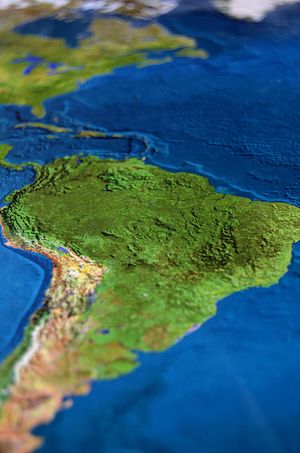With national general elections fast approaching in November, Chilean President Sebastian Piñera made official visits to Colombia, Paraguay, and Uruguay during the last days of September. Issues such as COVID-19 recovery, further regional integration and the continent’s digital transformation were high on the agenda. It was in this atmosphere of post-pandemic planning that Piñera invited his Uruguayan counterpart, President Luis Lacalle Pou, to join Chile’s “Asia-South America Digital Door.” This project, commonly referred to as the Humboldt project, aims to connect South America with the Asia-Pacific region through a series of transpacific submarine fiber-optic cables.
While approximately 99 percent of international communication passes through submarine cables, there are currently no cables directly connecting South America with the Asia-Pacific region. Instead, most traffic still flows through the United States before crossing the Pacific. The Humboldt project will lay eight submarine cables across the Pacific Ocean floor, beginning in the coastal Chilean city of Valparaiso and making first landfall 13,000 kilometers to the west in Auckland, New Zealand. The overall cost of the project, which will begin construction in 2022, is estimated at $450 million and will be financed from both public and private sources. Now that both Argentina and Brazil are signed up to the Chilean-led project, Uruguay has been invited to follow suit.
The Humboldt project will provide massive benefits to both regions in the form of increased digital connection and diversification of available markets. However, the project has been tainted by wider geopolitical struggles, specifically the rollout of 5G worldwide. The Chinese tech giant Huawei, which has been accused of espionage and threatening the national security of other countries, was originally very interested in supporting the project. Their suggested route would have connected Chile with the Chinese coastal city of Shanghai, acting as a digital gateway for South American countries into the Asia-Pacific.
Piñera expressed similar enthusiasm for Huawei’s potential involvement in 5G and submarine cable projects during his official visit to Beijing in 2019, and did not appear to have been dissuaded by former U.S. Secretary of State Mike Pompeo’s words of warning a few weeks earlier. Piñera met with senior Huawei officials and openly invited them to invest in the country’s digital transformation, stating that he wanted to “transform Chile into a business center for Chinese companies” in South America. Huawei has subsequently opened the first public cloud in Latin America in the Chilean capital Santiago (at a cost of $100 million), with a second one set to be built.
The Japan-based NEC corporation was eventually selected to undertake the Humboldt project. While the Chilean government pointed to aspects such as lower costs and lower risk as reasons for their final choice, it is not far-fetched to consider U.S. government pressure on Chile as a potential reason for the exclusion of the Chinese tech giant. This pressure to avoid engagement with Huawei has been evident elsewhere in the Pacific, with the United States also warning the Pacific Island states of Micronesia, Vanuatu, and Kiribati about the dangers of using Huawei submarine cables back in September 2020.
It would be unrealistic, however, to see this decision as a victory for the United States in South America. Although Huawei will not be involved in the Humboldt project rollout, Chinese and broader Asian trade with South American countries will no doubt rise. China has surpassed the United States as the top non-continental trading partner for all South American countries aside from Paraguay, Ecuador, and Colombia. Free trade agreements (FTA) are in place with Chile and Peru, with other countries such as Ecuador and Uruguay expressing interest in following suit. Eight South American countries have signed Memoranda of Understanding (MoU) related to China’s Belt and Road Initiative (BRI).
In contrast, the United States’ response to increased Chinese involvement in the region has lacked clarity and coordination, and successive administrations have struggled to propose a viable alternative. The recent trip by U.S. development and diplomatic officials to Colombia, Ecuador, and Panama vis-à-vis the Build Back Better World Initiative (B3W) failed to clarify how exactly the G-7 initiative will compete with China’s BRI and help the continent navigate the post-COVID world. Ecuador’s ambassador to Washington, Ivonne Baki, later echoed a widespread frustration about the lack of meaningful engagement when she asserted that “we’re still just the backyard.”
It is yet to be seen whether Uruguayan President Lacalle Pou will accept Piñera’s offer and join the Humboldt project, bringing his small nation that bit closer to the Asia-Pacific. However, he has recently opened up the possibility of free trade talks with China, apparently having achieved little success in engaging the United States in similar trade talks over recent years. With a U.S. that is more reactive to Chinese involvement and less concerned about the genuine needs of the continent, nobody should be surprised if South America shifts even further its focus away from the north.

































